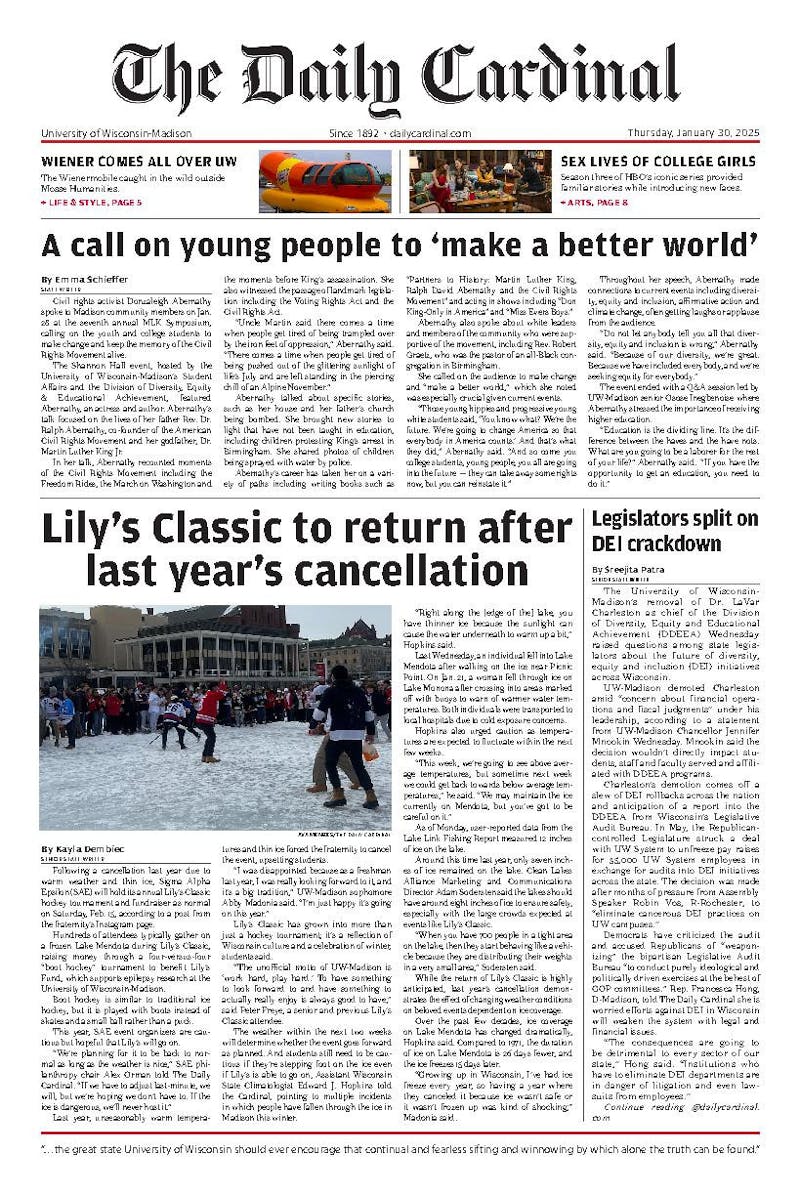Aboard a newly built research vessel, UW-Madison geologist Harold Tobin and a team of scientists set sail Friday on an eight-week expedition to drill, sample and study a fault zone off the coast of Japan.
The international research expedition, which is part of the Integrated Ocean Drilling Program, will look into understanding what causes earthquakes at deep-sea fault lines.
According to Jill Sakai, a university relations specialist, the IODP is an international collaboration of scientists from all over, but especially from the [United States] and Japan.""
Sakai said Tobin is one of two lead researchers for the program - the other is Japanese geologist Masataka Kinoshita.
The exact physics behind how and why earthquakes occur are still unkown, and Tobin said he and his team plan to help solve the mystery.
""My interest is in a better understanding of the biggest and most destructive earthquakes on the planet, which are the ones that take place where two tectonic plates meet,"" Tobin said via e-mail.
""We hope that, through this drilling project, we can better understand these earthquake faults, perhaps ultimately finding out how they work well enough to know if advance warning or predictions are possible,"" he continued.
Tobin said the length of the expedition is not unusual for UW-Madison scientists.
""Scientists from our department and others do field work in places like Antarctica and need to go on long expeditions,"" Tobin said. ""Going to sea usually means going away for an extended trip, and so we have to juggle teaching schedules or take a research leave to do it.""
The Nankai Trough, their zone of study, has been studied closely in the past, but Tobin's team of scientists will be the first in history to get samples of this plate boundary fault.
According to a University Communications release, the particular fault zone Tobin will be studying is ""one of the most active earthquake fault zones on the planet.""
In 1944, it produced a magnitude 8 earthquake and a large tsunami. It has been active over the past 1400 years.
Depending on its strength, a tsunami produced by this fault could threaten areas among the coastline of Japan or reach as far out as Hawaii, according to Tobin.
The ambitious project will place seismometers, pressure sensors and other instruments as far as one mile beneath the sea floor.
""Doing this will set the stage for a planned return in two different future expeditions to drill two miles deep, and then nearly four miles deep beneath the sea bed,"" Tobin said.
""This will be a record for scientific drilling in the ocean.""
Progress reports and photos from the eight-week journey will be available at http://www.jamstec.go.jp/chikyu/eng/Expedition/NantroSEIZE/exp314.html





